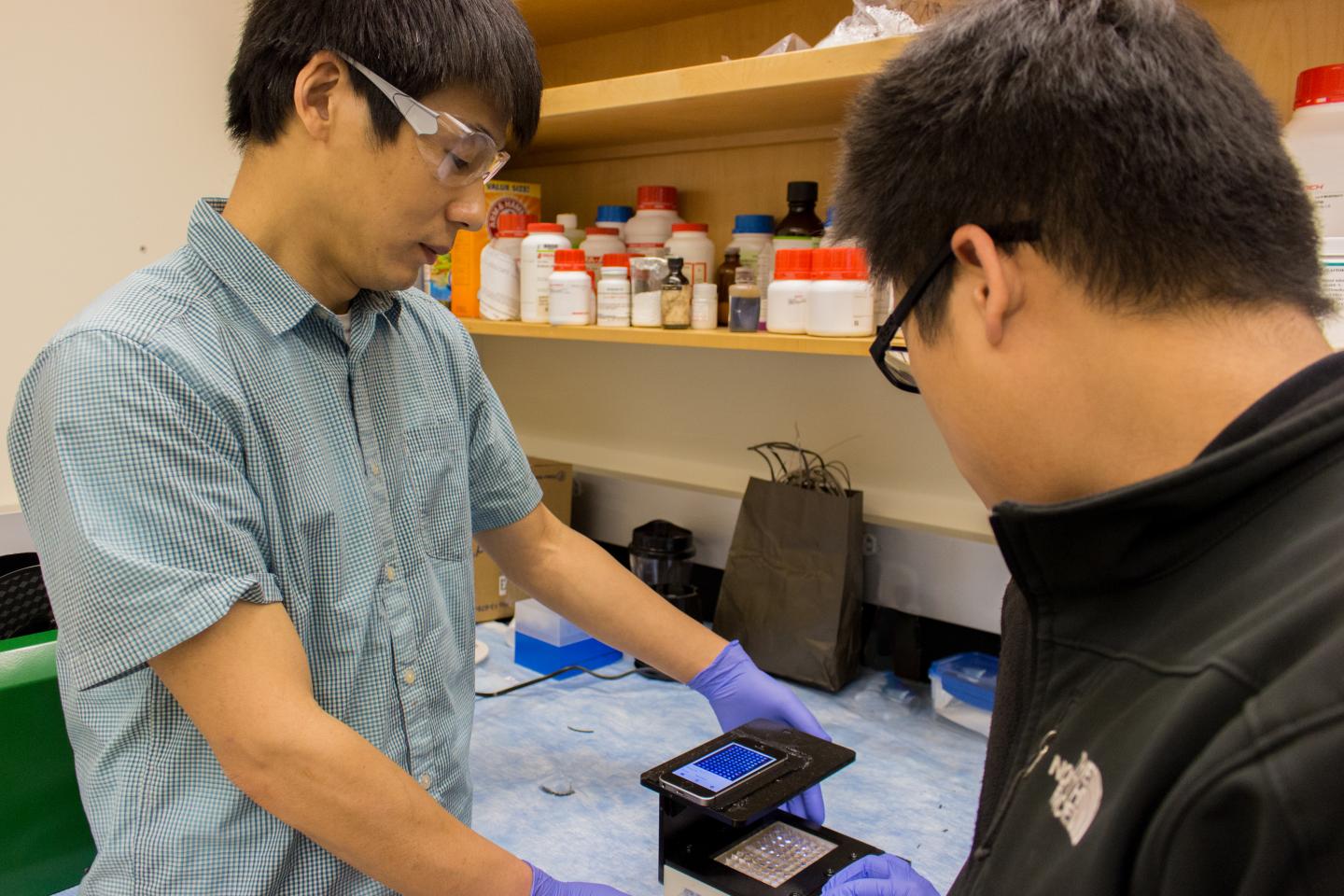
WSU Professor Lei Li and graduate student Yu-Chung Chang (l-r) test the new smartphone that detects 12 common viral and bacterial infectious diseases. Credit: Washington State University
Scientists have created a device the size of a smartphone that will allow doctors to quickly and accurate assess patients for multiple common viral and bacterial infections.
A team from Washington State University has developed a low-cost, portable laboratory on a phone that can detect common viral and bacterial infections nearly as well as clinical laboratories, a discovery which could yield faster and lower-cost lab results for fast-moving viral and bacterial epidemics.
The researchers found that the portable smartphone reader could detect 12 common viral and bacterial infectious diseases, including mumps, measles, herpes, and Lyme Disease. They tested the device on 771 patient samples at the Hospital of the University of Pennsylvania and found it provided false positives only about one percent of the time.
The device is able to take a photo of 96 sample wells at once, while most mobile health diagnostic devices can only analyze one sample at a time. The researchers then used a computer program to analyze test sample color results to determine positive or negative results.
The new discovery could be particularly effective in rural or other lower-resource regions where laboratory equipment and medical personnel are sometimes not readily available. Under these circumstances, doctors tend to rely on a patient’s symptoms or use their own judgement in looking at test sample color results to determine whether or not a patient has an infection.
The process is often inaccurate and test results are often sent to a lab in a distant city, putting a delay on when the final results become available. This time lag could cause infections to worsen and become more widespread.
“This smartphone reader has the potential to improve access and speed up healthcare delivery,” Lei Li, assistant professor in the School of Mechanical and Materials Engineering, said in a statement. “If we find out about infections, we can treat them more quickly, which makes a difference especially in low-resource, remote areas.”
The device can currently be built for about $50 and the researchers have filed a patent on the new technology. They also plan to move forward with clinical trials that could ultimately lead to the commercialization of the technology.
The study was published in Clinica Chumica Acta.




